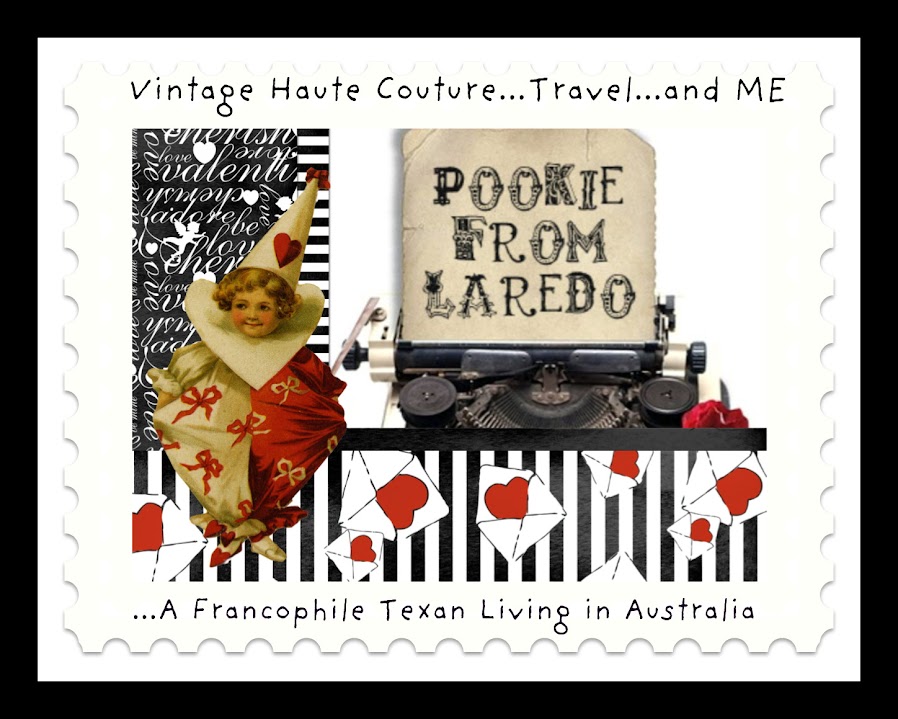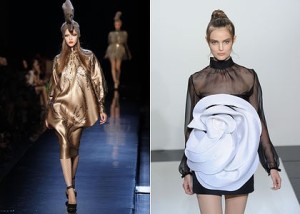I absolutely love vintage fashion, especially French Haute Couture from the 1930s-1960s.
"The model he imagines is, first and foremost, a beautiful object, excellently made and finely sewn; so that if, years afterwards, it were discovered at the back of some cupboard, although the fashion which inspired it has long gone out of date, it would still inspire astonishment." Celia Bertin
I just read an interesting article in the newspaper this weekend about the future of haute couture. It's amazing to know that there were 100 designers presenting collections in 1945 and today, there are only 17 doing so. Certainly a sign of the times!
Who wears Paris haute couture? Very few, apparently...
July 10, 2010
Sydney Morning Herald
Its client base bare, the high-fashion world may be on its last legs, writes Kellie Hush.
FOR the past 20 years Paris's Haute Couture Week has been dying a slow death. Clients are dwindling, the fashion is becoming more irrelevant and now designers are failing to show. It may be happening one sequin at a time - and the French will certainly put up a good fight - but couture is losing its place at the top of the fashion pyramid.
This week the big shows on the schedule were few and far between - Christian Dior, Chanel, Valentino, Giorgio Armani, Elie Saab and Jean Paul Gaultier. At the height of haute couture in 1945, there were 100 designers presenting collections. Now there are 17.
The New York Times fashion editor, Cathy Horyn, this week summed up the state of haute couture perfectly when she said it was ''slipping off people's radars faster than a UFO".
Fewer than 500 customers worldwide actually buy haute couture, with about 150 regular clients attending the Paris shows twice a year. The starting price for haute couture is $30,000. A gown taking 600 hours of handiwork or more can cost $100,000 and the jewellery millions. Millions of dollars are also spent on the fashion shows. A lot of fuss for a small group of rich shoppers but the haute couture is the pride of French fashion, it is French fashion.
The governing body, the 141-year-old Chambre Syndicale, threw the haute couture a lifeline last year. Seven luxury jewellers were invited to be a part of a new haute couture jewellery day in the hope of attracting more attention and luring wealthy customers. Five booked shows last week.
Dana Thomas, the Paris-based author of Deluxe: How Luxury Lost its Lustre, lays much of the blame on Bernard Arnault, the chairman and CEO of the luxury goods company LVMH, which owns a large slice of luxury fashion, including Louis Vuitton, Dior, and Givenchy. She believes he saw couture shows not as a service to clients, or an opportunity to sell beautiful clothes, but as a vehicle for hype, advertising and marketing and a way to sell perfume and logo-covered accessories to the mass market.
"Arnault encouraged John Galliano at Dior and Alexander McQueen at Givenchy to turn couture into a spectacle and they did. It was exciting at first, but this model has grown tired. Meanwhile, it scared away the clients, who found nothing to buy and loathed the circus aspect of it."
Not all the blame can be laid at Arnault's door. The global economy has also added a few gilded nails to the couture coffin. At the end of last year the celebrated French haute couture designer Christian Lacroix was declared bankrupt. The once grand company was reduced to a licensing operation to sell just perfumes and accessories.
According to Thomas, the only house that does well in couture is the privately owned company Chanel. "Chanel doesn't make money but it doesn't lose it, either - mainly because Karl Lagerfeld still offers chic, wearable clothes instead of wild costume-like get-ups. Chanel hasn't sullied the image of the brand with soulless mass-marketed junk. They send the collection to their clients and all is done discreetly, which clients prefer. There will always be a need for couture - there are always rich people who want extreme quality and exclusivity - but couture as it is now is finished, because it is no longer relevant."
The fashion journalist Jamie Huckbody, who has covered the haute couture for 15 years, is certain it still has a future. "There will always be a demand for the unique and the handmade. What does feel outdated are those creations that are more carnival drag queen than stealth wealth, and that are just made for media titillation. They just look inappropriate."
♥












